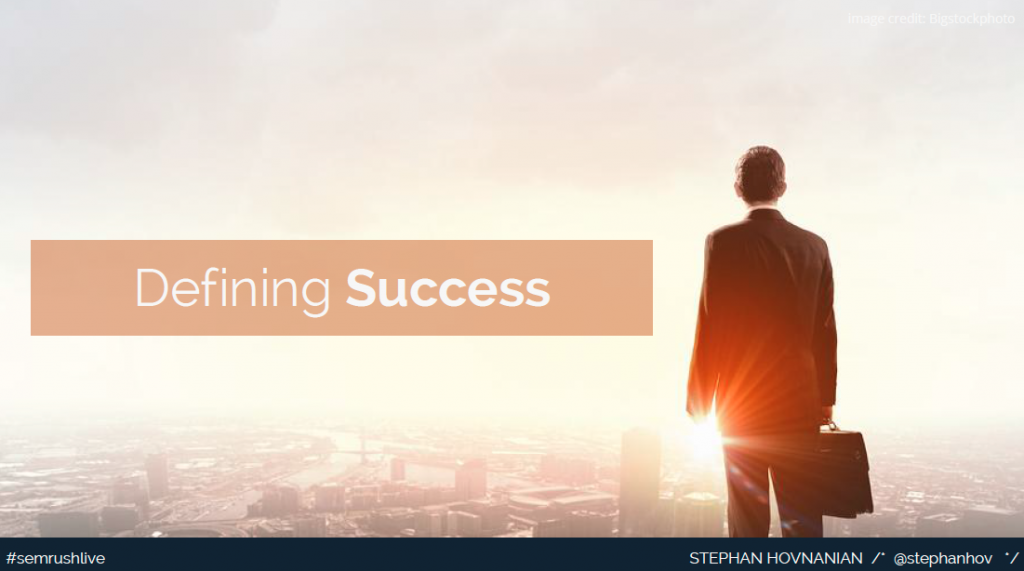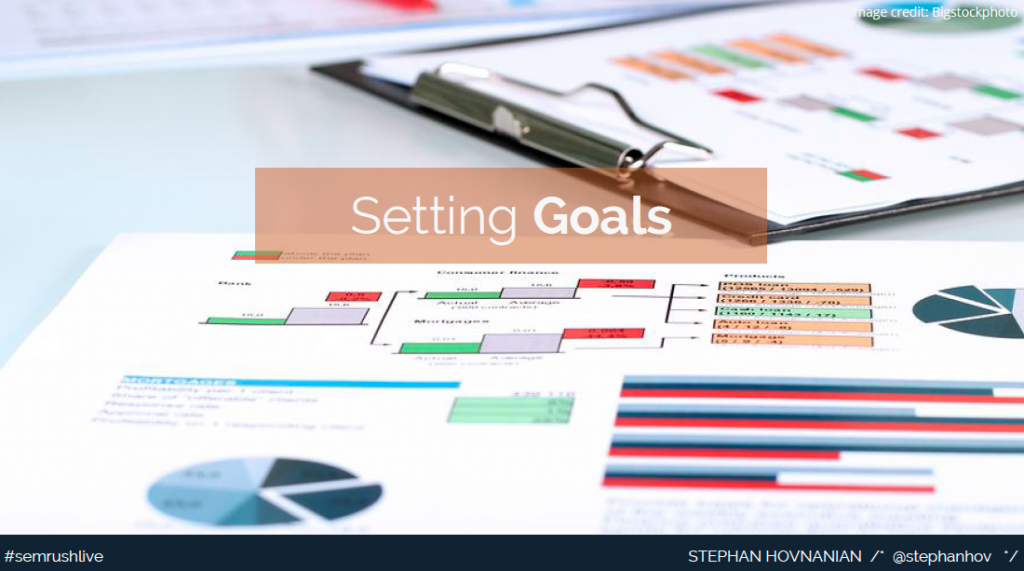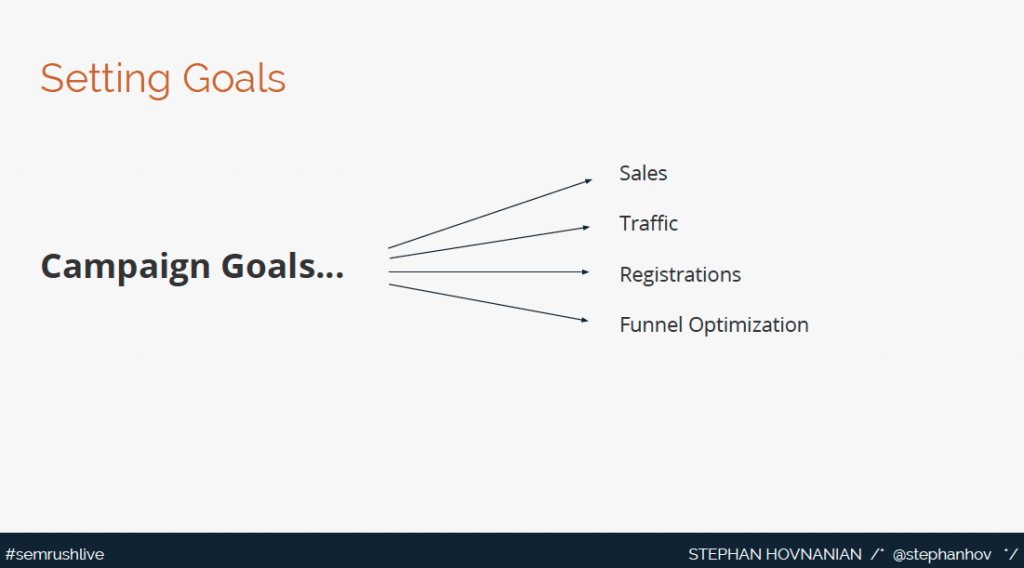What is a good email? Can we name any true examples of good emails? Ever so often, we ask ourselves this very question. But sometimes we omit a question that may be even more important – how can we measure effectiveness of our emails? It’s difficult to accomplish this task without figuring out what the main goal of your email marketing campaign is and which metrics you should use to track its effectiveness.
Email marketing expert Stephan Hovnanian shared his 15 years of email and web marketing experience in a recent SEMrush webinar. Stephan is the owner of Shovi Websites, an email marketing and web strategy company. He works with B2B brands, helping them revitalize their relationships with their audiences and strengthening their digital marketing efforts.
If you want to learn how to find a place for email in your marketing strategy, watch his webinar now!
In this webinar, Stephan covered several important topics:
Emails’ place in the marketing continuum What email is and what isn’t Creating goals and defining success The secret sauce for being relevant in your customers’ inboxes Segmentation, content and optimization tips Tests and metrics worth experimenting withWhat Can Email Marketing Do for You?
To start, let’s answer two major questions about the very core of email.
Where does email marketing fit in?
Actually, email is applicable to everything, and it doesn't have a specific place - for example, Facebook ads. So, there are three purposes in the marketing continuum that emails serves best:
Communicating with a qualified audience with the intent to buy Communicating through the customer acquisition period Ongoing customer relations and value nurturingWhat is email, and what is it not?
Now, when we know where email fits in, let’s discover what it is. First of all, email is:
A brand touchpoint A trust builder One-to-one communicationAnd it’s a mistake to think that email is a sales channel, billboard, or one-size-fits-all message. But an important point here is that email can be all these things, if you do it right by using personalization and segmentation. If you treat email like a brand touch point, a trust builder, and a one-to-one communication channel, you can sell your products or services and do it well.
Creating Your Email Marketing Strategy
There are a lot of stages to developing a strategy and many things to consider. To start with, you should understand what success looks like for your email marketing programs. You should definitely look at industry benchmarks, such as Silverpop, Litmus, and Econsultancy. These companies release benchmark reports on a regular basis; you can pick up a lot of useful information from them. Also, think about how email marketing helps improve your sales, support, and customer success.
To start with, you should understand what success looks like for your email marketing programs. You should definitely look at industry benchmarks, such as Silverpop, Litmus, and Econsultancy. These companies release benchmark reports on a regular basis; you can pick up a lot of useful information from them. Also, think about how email marketing helps improve your sales, support, and customer success. The next step is to set goals, which can be divided into three different groups: program goals, individual email goals and campaign goals.
The next step is to set goals, which can be divided into three different groups: program goals, individual email goals and campaign goals.
Program goals:
Churn: new subscriptions vs. people who unsubscribed Growth: steady growth of your email list Fatigue: when people get tired and become inactive Attribution: emails that eventually become customer Segment optimizationAs for the last goal, let’s dwell on it. Today we can get a lot of data from emails, and that allows us to create a very rich customer profile from these emails. You can segment your subscribers and put them into different groups in order to send each of those groups more relevant emails.
Individual email goals:
Newsletters Lead nurturing sequence New blog post notifications Welcome/onboarding series Transaction receipts Account relatedDifferent types of emails have different purposes. And if they have purposes, they have goals. Obviously, each of those goals would be different. You can make a list of all the different types of emailsthat your company sends and think about what goals are appropriate for each of them. This will help you to measure performance for all types of emails.  Each time I send one of these types of emails, I’m launching a campaign and start optimizing things. You can play with designs, copy, colors, buttons and other email elements. And these things will have a direct impact on your traffic, registrations, interaction, and engagement.
Each time I send one of these types of emails, I’m launching a campaign and start optimizing things. You can play with designs, copy, colors, buttons and other email elements. And these things will have a direct impact on your traffic, registrations, interaction, and engagement.
Tips for Exceptional Email Marketing
Now, that you have a general strategic overview of email marketing for your company, we can move on to some other interesting elements of email marketing.
Designing for Experience
Today, this is one of the most important things you can do. If your company can create some awesome experience with your email, your subscribers are much more likely to respond to you. So, you can:
Align your email with landing pages Deliver what you promised in your subject lines and copy Think mobile, even on desktop Optimize context: timing and content investmentSegments and Triggers
Triggers happen behind the scenes. For instance, a trigger may be an action related to or taken by your customer that your email service can track. Triggers are importantbecause they let you dial in on how your subscribers behave. As for segments, think of them asas subgroups of people on your email list that share some characteristics.You should have the following segments:
Brand champions and network amplifiers Interest based According to content type (blog posts, webinars, etc.) Local customersContent Strategies
Sometimes people simply don’t know what to send. Before we give you any actual ideas, it’s worth mentioning that you should always remember one thing about your content – it’s about them, not you. Below you’ll see some ideas for what to put in your emails:
Experiment with different content types (image vs. text links) Trade/local events (what you’re attending and what you learned) Something exclusive Primary vs. secondary contentList Growth Best Practices
Your email list is a great asset, and you should always enhance it. The following tips can help you grow your email list:
Have a subscribe page Link to your subscribe page via email Commit to sending your emails on a regular basis Create all kinds of calls-to-action in order to engage with your customers Right time, right way asks. People who came to your email list from search engines differ from people who came from social media platforms. Both of these groups have to be treated differently. When you ask someone to join your email list, pay attention to whether they came from a search engine, social platforms or other channels.Conversion Optimization and Testing
Conversion optimization and testing can get a little tricky with an email, because there are a lot of important elements to consider:
Click-through rate vs. click-to-open rate Split testing Design Copy and subject linesQuestion Section
Our listeners asked a lot of questions during the webinar. It was impossible to answer all of them, because we ran out of time. Nevertheless, Stephan answered them after the webinar!
Q: How would you recommend measuring your click-to-open rate (CTOR)?
Stephan: CTOR is the easiest to measure if you can export the part of your campaign report that shows the links that were clicked on in your email, or recreate that list in a spreadsheet. Add a column that describes the link and its reason for being in the email (e.g., primary call to action, lead-gen link, etc.). Add another column that describes the type of link (button, text, image, video thumbnail, etc.). Record the number of unique clicks for each link (wait 48 hours to capture the vast majority of activity for the campaign). Divide those unique clicks by the number of unique opens (after 48 hours) to get your CTOR.
Q: What is the best way to build your email list?
Stephan: There is no "best way," but you will get the best outcome from your efforts when you look at each page on your site, understand its role in your entire marketing and customer success mix, how you're going to promote it, who is coming to that page, and what state of awareness they have with your brand and the content they're about to read. Then create a "right time, right way" to ask for that page (that was mentioned earlier). Personally, I would opt to grow your list with fewer high-quality subscribers over a cheap trick or tactic that will draw in a large quantity of low hanging fruit.
Q: Could you briefly describe the different types of campaigns and the ideal segments for each?
Stephan: Each type of email in your arsenal has a purpose and goals that contribute to the health of your overall email-marketing program. Some examples I referenced are newsletters, onboarding sequences, lead-gen sequences, and transactional emails.
Newsletters – generic brand touchpoints. As such, you can send these out to your entire list; expect average open rates, and lots of clicks if the content is valuable. Onboarding sequences – these can be an automatic series of emails for new subscribers, or new customers, to help them get familiar with your brand and the value you plan to offer them in exchange for being a subscriber. As such, these only go out to new subscribers or customers, and should have a high engagement rate (opens and clicks). Lead-gen sequences – similar in structure and response rates to onboarding, but an example of a lead-gen sequence would be the emails you send after someone downloads a guide, checklist, etc. The key here is to build trust and value, then invite the subscriber to take the next step in the buying journey. Transactional emails – these have the highest open rates of all emails because they are a confirmation that someone's purchase went through. Use them to cross-promote something else of value and to broaden the relationship you have with the customer. From a segmentation standpoint, think about how you might be able to use customer data to identify a new piece of content you can share with them in the email, and have a section of your template that personalizes that content based on the different segments.Again, thanks a lot to Stephan Hovnanian for his invaluable tips!
Innovative SEO services
SEO is a patience game; no secret there. We`ll work with you to develop a Search strategy focused on producing increased traffic rankings in as early as 3-months.
A proven Allinclusive. SEO services for measuring, executing, and optimizing for Search Engine success. We say what we do and do what we say.
Our company as Semrush Agency Partner has designed a search engine optimization service that is both ethical and result-driven. We use the latest tools, strategies, and trends to help you move up in the search engines for the right keywords to get noticed by the right audience.
Today, you can schedule a Discovery call with us about your company needs.
Source:





